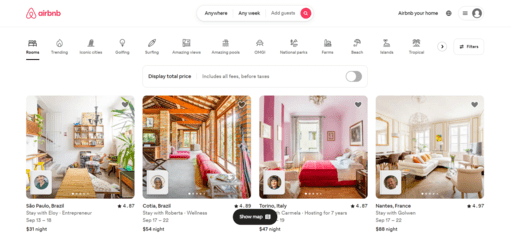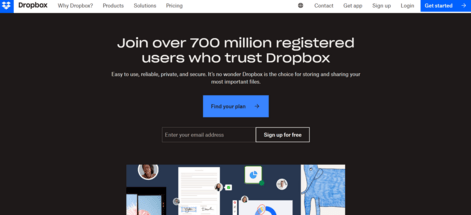In the digital age, your website is often the first interaction potential customers have with your brand. The design of your website can significantly impact user engagement and conversion rates.
But have you ever wondered why certain websites keep you glued to the screen while others leave you clicking away in seconds? The answer lies in the realm of psychology.
By applying psychological principles to web design, you can create a user experience that captivates visitors and drives conversions.
In this blog post, we’ll explore how psychology plays a pivotal role in website design and delve into various techniques and strategies employed by successful websites.
The Power of First Impressions
When it comes to website design, first impressions are everything.
Just as you form an opinion about a person within seconds of meeting them, users judge a website’s credibility and trustworthiness within the first few moments of arrival.
This phenomenon is known as the “halo effect.” A well-designed website immediately conveys professionalism and reliability.
To illustrate this point, let’s take a look at Airbnb’s homepage.

- The site’s minimalist design, clean interface, and high-quality images immediately convey trustworthiness and professionalism.
- Users are more likely to trust Airbnb with their travel plans because the website’s design aligns with their expectations of a reputable travel platform.
Visual Hierarchy and F-Pattern Reading
Understanding how users visually scan a webpage can be a game-changer in web design.
Research has shown that people tend to follow an F-pattern when reading web content. This means that users scan a page in an “F” shape, primarily focusing on the top and left side of the screen.
Designing your website with this pattern in mind can help you place the most important content where users are most likely to see it.
Take, for example, the website for the Harvard Business Review.

- They strategically place their featured articles at the top of the page, making them the first thing users see when they land on the site.
- This aligns with the F-pattern reading behavior and ensures that users immediately engage with the most important content.
The Psychology of Color
Colors can evoke powerful emotional responses and influence user behavior. Different colors can convey various feelings and messages.
For instance, blue is often associated with trust and reliability, which is why many financial and tech companies use it in their branding.
On the other hand, red can evoke feelings of urgency or excitement, making it suitable for calls-to-action (CTAs).
One great example of effective color psychology in web design is the website for Dropbox.

- The use of a bright blue color for the CTA button encourages users to take action, sign up, or download the app.
- This subtle yet effective use of color psychology enhances the conversion rate.
The Role of Typography
Typography plays a significant role in conveying the tone and personality of a website. The choice of fonts, spacing, and text formatting can affect how users perceive your brand.
For instance, a playful and casual font may work well for a children’s toy store but may not be suitable for a law firm’s website.
Medium, a popular publishing platform, understands the importance of typography.

- Their website features clean, easy-to-read fonts that encourage users to engage with long-form content.
- The thoughtful typography choices contribute to a positive user experience.
Social Proof and User Trust
Human beings are inherently social creatures. We often look to others for guidance and validation.
This psychological principle can be harnessed through the use of social proof on your website. Social proof includes customer reviews, testimonials, user ratings, and trust badges.
Amazon, the e-commerce giant, uses social proof brilliantly.

- Every product page is filled with customer reviews and ratings, helping users make informed decisions.
- Additionally, trust badges such as “Amazon’s Choice” and “Prime” reassure users about the quality and reliability of the products and services offered.
Scarcity and Urgency
The fear of missing out (FOMO) is a powerful psychological motivator. Incorporating elements of scarcity and urgency into your web design can drive users to take action.
This can be achieved through limited-time offers, countdown timers, and stock availability notifications.
An example of this can be seen on the website of booking.com.

- When users search for hotels, they are often presented with messages like “Only 2 rooms left!” and “This hotel is in high demand.”
- These messages create a sense of urgency, encouraging users to book their accommodation quickly.
Cognitive Load and Simplicity
Too much complexity on a website can overwhelm users and lead to high bounce rates.
The concept of cognitive load refers to the mental effort required to process information.
A cluttered and complicated website design increases cognitive load, making it harder for users to find what they’re looking for.
Apple, known for its minimalist design, is a prime example of simplicity in web design.

- Their website features clean layouts, intuitive navigation, and minimal distractions.
- This ensures that users can quickly find the information or products they need without unnecessary cognitive strain.
Personalization and User-Centric Design
Personalization is the key to creating a tailored user experience. By understanding user preferences and behavior, you can deliver content and recommendations that resonate with individual visitors.
This not only enhances user engagement but also increases the likelihood of conversion.
Netflix is a prime example of personalization in action.

- The streaming giant’s homepage is dynamically generated based on the user’s viewing history and preferences.
- This user-centric approach ensures that each visitor is presented with content they are likely to enjoy, keeping them engaged and subscribed.
Mobile Optimization
With the increasing use of smartphones, mobile optimization has become crucial in web design.
Mobile-friendly websites are not only more accessible but also enhance user experience.
Neglecting mobile optimization can lead to high bounce rates and lost conversions.
A website that excels in mobile optimization is Airbnb.

- Their mobile app and mobile website offer a seamless experience, with easy navigation and a responsive design that adapts to various screen sizes.
- This commitment to mobile optimization ensures that users can book accommodations on the go, contributing to higher conversion rates.
Conclusion
Incorporating psychological principles into your website design can be a game-changer for user engagement and conversion rates.
By understanding how users perceive and interact with your website, you can create a user experience that aligns with their expectations and motivations.
From the power of first impressions to the psychology of color and typography, every element of web design can be optimized to enhance user engagement and drive conversions.
Successful websites like Airbnb, Harvard Business Review, Dropbox, Amazon, booking.com, Apple, Netflix, and many others have leveraged these psychological principles to create user-centric and visually appealing designs.
As you embark on your own web design journey, remember that it’s not just about aesthetics but also about understanding and catering to the psychology of your target audience.
In doing so, you’ll create a website that not only looks great but also converts visitors into loyal customers.